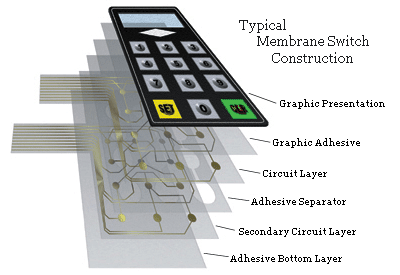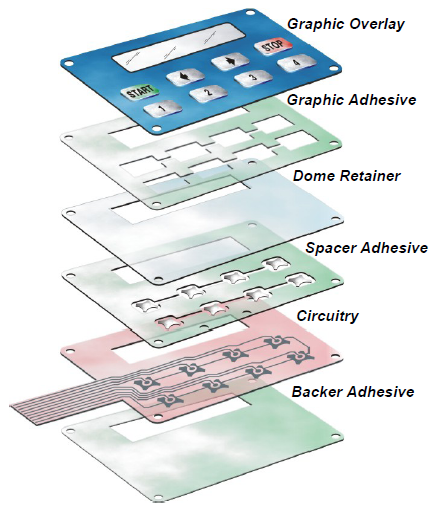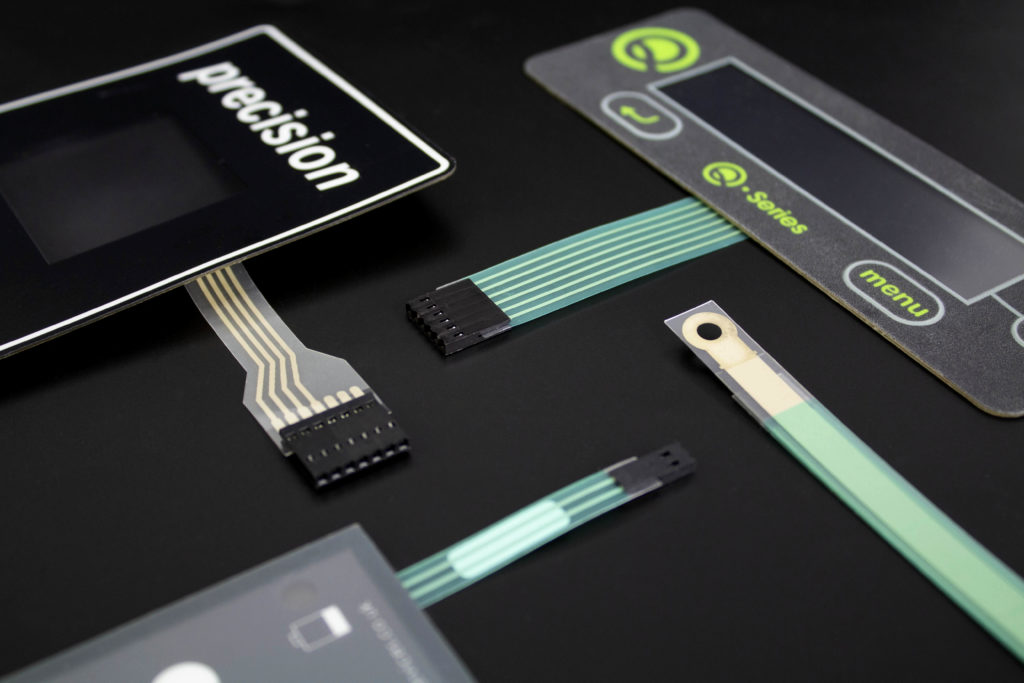Recognizing the Value of Membrane Switches in Customer Interfaces
Membrane switches are indispensable elements in the design of efficient interface, assisting in not only performance but likewise enhancing aesthetic allure and individual communication. Their distinct attributes, such as resistance to customizable styles and ecological aspects, make them appropriate for a diverse selection of applications throughout numerous industries. As we check out the future trends and different benefits related to Membrane innovation, it comes to be clear that these switches are greater than simply components; they represent a merging of technology and practicality. The ramifications of this modern technology on user experience are worth checking out further.
What Are Membrane Switches?

The spacer layer, which has glue residential properties, enables the splitting up of the circuit layer from the overlay, guaranteeing that the switch continues to be in a non-activated state up until pressed. When stress is put on the overlay, it compresses the spacer layer, linking the space and completing the circuit in the underlying layer. This layout not just reduces the physical room required for traditional mechanical buttons however also boosts the toughness of the device, as Membrane switches are usually immune to dust, dampness, and other ecological aspects.
Commonly located in applications ranging from customer electronics to clinical devices, Membrane switches are important to modern innovation, providing a reliable and user-friendly user interface that aligns with modern design demands.
Advantages of Membrane Buttons
While numerous switch modern technologies exist, Membrane Switches deal distinct benefits that make them specifically desirable in different applications. Among the primary advantages of Membrane switches is their small layout, which allows for space-saving applications in tools where property is limited. Their slim account not only improves visual allure but likewise promotes light-weight construction.
One more substantial benefit is their resistance to environmental elements. Membrane buttons are commonly sealed against dampness, dirt, and impurities, making them ideal for use popular atmospheres, such as clinical tools and commercial tools. This resilience prolongs the life expectancy of the button, lowering upkeep prices and boosting reliability.
Moreover, Membrane switches can be customized to meet particular design demands, integrating distinct graphics and colors that improve individual interaction. Their tactile feedback options can also be customized to give an enjoyable customer experience. In addition, Membrane buttons are economical, especially in high-volume applications, as they can be created efficiently.
Applications in Various Industries

In the customer electronics here sector, Membrane switches are widespread in devices such as microwaves, cleaning devices, and remote controls. Their responsive feedback and visual options improve user experience while supplying a sleek, modern-day look. Furthermore, automotive makers utilize Membrane buttons in dashboard controls and infomercial systems, where space is restricted, and customer interaction is essential.
Additionally, the commercial industry leverages Membrane buttons in control panels for machinery and devices, permitting user-friendly procedure in frequently extreme settings. Their resistance to chemicals and moisture makes sure longevity and dependability in these applications. Generally, the adaptability of Membrane Switches adds dramatically to their widespread use, making them crucial in various technological domains.
Layout Factors To Consider for Membrane Switches

When developing Membrane switches, a number of vital factors to consider need to be thought about to guarantee optimal capability and user experience. The selection of materials is critical; picking sturdy, top quality substrates can enhance the button's long life and resistance to environmental elements such as wetness and temperature level variations.
Second of all, the style of the graphic overlay ought to prioritize quality and convenience of usage. Icons and text have to be understandable, and the design ought to assist in user-friendly interaction (membrane switches). Additionally, responsive comments is vital; incorporating a responsive dome or other mechanisms can boost the individual experience by offering physical verification of activation
One more essential factor is the button's electrical efficiency. Designers must make sure that the conductive traces are correctly designed to lessen resistance and avoid signal disturbance. This includes assessing the needed actuation force and making certain compatibility with the electronic parts they will user interface with.

Future Fads in Membrane Modern Technology
As technology proceeds to advance, Membrane buttons are positioned to develop dramatically, driven by developments in products and manufacturing methods. One arising fad is the consolidation of sophisticated products, such as adaptable substrates and conductive inks, which enhance toughness and reduce the overall weight of Membrane buttons. These products not just improve the tactile action yet also allow for the style of buttons that can hold up against read the full info here harsher environmental conditions.
Additionally, the combination of touch-sensitive modern technologies is changing traditional Membrane Switches into more interactive individual interfaces. Capacitive touch sensors installed within Membrane button panels can supply an extra intuitive and responsive user experience, aligning with the growing demand for sleek, modern designs in consumer electronics.
Additionally, advancements in printing techniques, such as digital and 3D printing, enable rapid prototyping and customization of Membrane buttons. This adaptability permits makers to react quicker to market demands and consumer preferences.
Lastly, sustainability is coming to be a substantial emphasis, with makers checking out environment-friendly materials and processes. As these fads unravel, the future of Membrane technology promises boosted capability, aesthetic appeal, and ecological duty, solidifying their role in innovative customer interfaces across various sectors.
Final Thought
In verdict, Membrane Switches stand for try this website an important part in the design of individual interfaces, combining performance with visual flexibility. As improvements in modern technology continue, the development of Membrane switches is expected to additional improve user interfaces, driving advancement and boosting usability in a progressively intricate technological landscape.
Membrane switches are essential components in the design of efficient customer interfaces, facilitating not only performance yet additionally enhancing aesthetic charm and individual communication.Membrane Switches offer as a vital component in different individual interfaces, assisting in a smooth communication in between customers and electronic devices.While various button technologies exist, Membrane Switches offer distinct advantages that make them particularly desirable in various applications.Furthermore, Membrane switches can be customized to meet particular style demands, integrating distinct graphics and colors that enhance user interaction.In conclusion, Membrane Switches stand for a crucial element in the style of individual interfaces, integrating functionality with aesthetic adaptability.